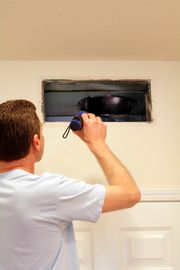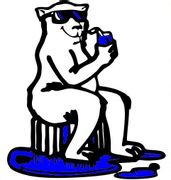Common Questions About UV Light & Indoor Air Quality

Used in the right quantity, UV light is a powerful tool in maintaining healthy air in the home. From reducing bacteria and germs to boosting negative ions, more homeowners are looking to harness this technology in their heating and cooling systems. For insight into how UV light helps reduce household bacteria and germs, here are the answers to some frequently asked questions.
How UV Light Can Reduce Household Bacteria & Germs
1. What is UV light?
Ultraviolet (UV) light is a type of electromagnetic radiation derived from the sun. It’s part of a wide range of wavelengths that make up the electromagnetic spectrum and falls between visible light and X-rays. UV radiation is powerful and has sufficient energy to break chemical bonds.
There are three types: UVA, UVB, and UVC. The latter is the shortest and the strongest, but luckily for sunbathers, it’s absorbed by the ozone and never reaches the Earth’s surface. However, it’s highly effective for destroying bacteria and germs, making it valuable as a controlled, safe application within the home.
2. How does UV light destroy bacteria & viruses?
Since UV light is powerful enough to break chemical bonds, it can cause ionization. During this process, electrons break away from atoms, causing them to form or break chemical bonds. This is incredibly beneficial for destroying bacteria, viruses, and mold.
 Through a disinfection method called ultraviolet germicidal irradiation (UVGI), short-wavelength UVC light is used to disrupt and destroy the molecular bonds that hold together microbial genetic material and prevent it from performing vital functions. This disruption to the bonds is highly effective for disinfecting bacteria-ridden surfaces, for example.
Through a disinfection method called ultraviolet germicidal irradiation (UVGI), short-wavelength UVC light is used to disrupt and destroy the molecular bonds that hold together microbial genetic material and prevent it from performing vital functions. This disruption to the bonds is highly effective for disinfecting bacteria-ridden surfaces, for example.
3. How is UV light incorporated into an HVAC system?
UV light can be installed in heating and cooling ducts in the form of an air purifying device. Once installed, it helps eradicate small airborne particles containing harmful microorganisms by injecting negative ions into the air as it flows through the ducts. They then break down these harmful pollutants into elements such as oxygen, carbon dioxide, and water vapor that are safe for breathing. This process protects the lungs and respiratory system by preventing the inhalation of dangerous outside pollutants.
4. What are the benefits of negative ions?
In addition to breaking down bacteria and viruses, negative ions are believed to be beneficial for a number of bodily processes and functions. For example, they may produce biochemical reactions that increase mood-boosting serotonin, boost energy, and relieve stress.
If you’re looking to harness the power of UV light in your home, put your trust in the professionals at Long's Air Conditioning & Refrigeration in Robertsdale, AL. For over 40 years, their licensed team of air conditioning contractors has been providing a range of heating and cooling services for homeowners and business owners. Utilizing the best appliances and technology in the industry, they proudly provide HVAC installation, maintenance, and repair. To learn more about their services or schedule an appointment, give them a call today at (251) 947-9499 or visit their website.
AL # 20003
AL # 36576
About the Business
Have a question? Ask the experts!
Send your question

